#prunus serotina
Explore tagged Tumblr posts
Text

black cherries should be ripe in a week or two!
119 notes
·
View notes
Text
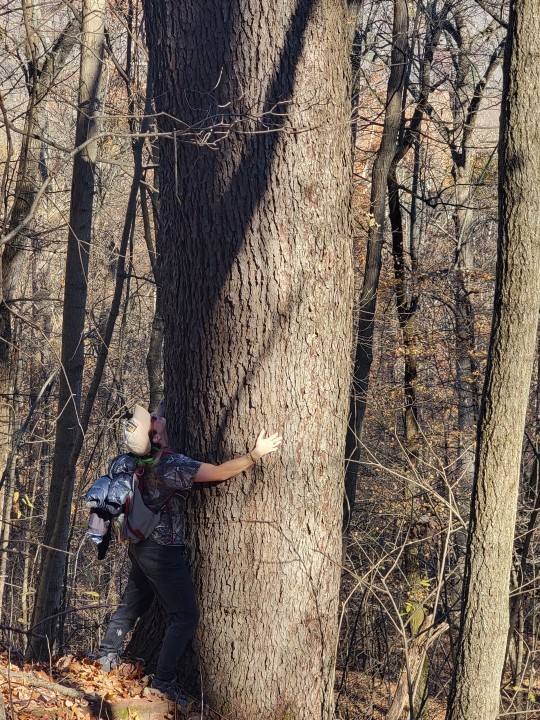
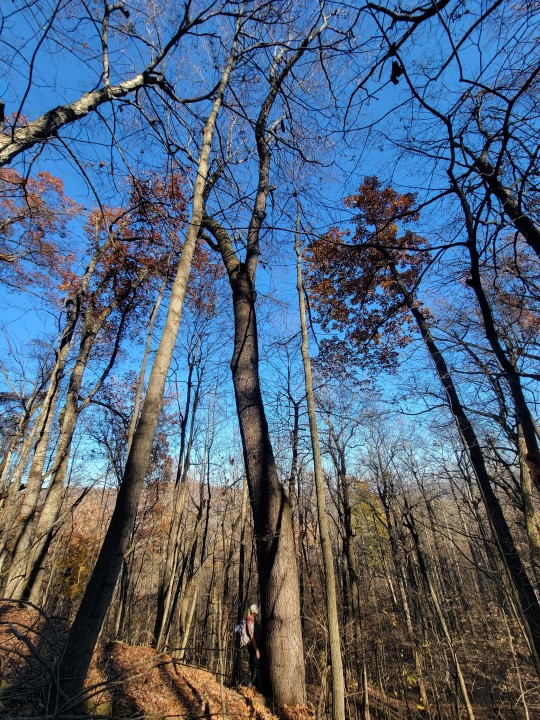
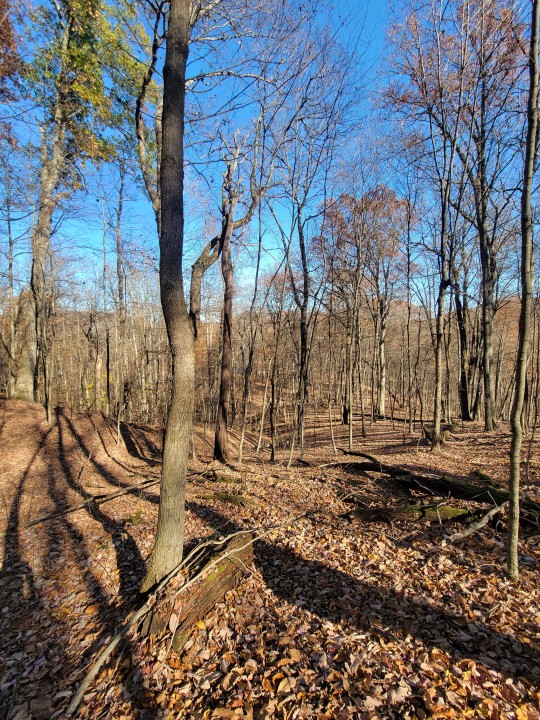

Prunus serotina
50 dbh 90 ft tall black cherry tree, largest one ive ever seen forest grown, oldest one ive ever seen too. growing on a shale ridge in essentially oak duff and rock. Perhaps even one of the oldest in the state. Fort hills oldest trees are said to be easily in the 300 range. 4 beech trees 2 sycamores 5 tulips and many chestnut oaks are within the older range. The vast majority of trees are easily over 100 years old in this forest making it one of the best and largest sections of old growth stands in Ohio.
Fun fact!, did you know that pure old growth and even state regulated old growth are so strict in defenition that within the United States the only Pure old growth with full ecology intact is in alaska. Thats right ! Red Woods are even considered unpure. Very sobering. DNR based oldgrowth is based around the ammount of oldgrowth core species left in the stand and certain limitations of ecological interactions as well as ecosystem stability and the lack of invasives. In contemporary and non vigorous framing. An old growth forest is a non secondary stand of forest that maintains a randomized height and age limit where there are more trees over 150 Years or more in age than younger growth, forbe grass shrub and other layers are somewhat maintained and have little species specific loss from what would of been historically there. So while this forest would hit the 3rd def of old growth forest its defenetly not pure nor is it technically a DNR def of old growth. Old Growth stands (not forests are considered to be sections of forest in nature preserves that are older than settlement) which is why im using that language.
34 notes
·
View notes
Text
Plant of the day: Black Cherry - Prunus serotina



Today I wanted to recognize a lovely early successional tree species, one of America's showiest "Cherry" species and a vigorous ecological powerhouse
Black cherry has quite the unusual range, commonly found All over the Eastern US but has multiple geographically distinctive subspecies throughout the West and Mexico. North from Minnesota to Nova Scotia south to mid Florida to east Texas, Additionally it can be found in Big Bend National Park, areas of Arizona and New Mexico. South of the border Black Cherry is found throughout the East, West, and South Sierra Madres mountains reaching as far south as Guatemala.
Black Cherry as I've encountered it grows mostly in old fields and disturbed grounds, but apparently in Mexico it occupies mountainous regions. The species is also able to live long enough to be part of some older forests as well. In terms of finding it, If you've ever driven down an Eastern-Midwest highway in May, you'll notice plenty with a stunning display of white flowers (see below). I saw them all the way out to Kansas on Route 70.

This cherry occupies weedy environments very well, usually ending up with twisted bent forms and has an incredibly high germination rate. This vigorous tree can dominate a seed bank for years (I've pulled probably thousands from my garden beds). In Europe-East Asia it is considered a problematic invasive...but here where it's native it can outcompete the worst competition.

Identifying black cherry is rather easy, it has a dark flakey semi-plated bark (below), while the stems are notably cherry like (horizontal fissures) at the stems and intact portions of bark. The heart wood is notably orangish in color and the leaves give off the cherry-like odor when crushed. Leaves are typically longish symmetrical semi-shiny, darkish green with one very visible vein and shallow serated edges. Flowers are white clusters reminiscent of horns present around late May to early June. The ripe fruit is blackish red and present around August, on a good year it's quite plentiful (and delicious).

Black cherry is a wild edible in a few forms. I personally like to snack on the sour ripe fruit and spit out the large seeds, in Mexico these fruits are referred to as cupelines! The most fruitful useage is probably making jelly from collected fruit (something I do not know how to do). Cough syrups were historically derived from the bark and are still present in popular tea flavors such as "throat coats" (awful name).
While marginally edible to us the black cherry is ecologically the most important native cherry species for wildlife. Not only is there plentiful fruit for birds and large mammals the tree is rated number three amoung supported lepidoptera species. Per Doug Tallamy and Kim Shropshire's research the Prunus genus supports [at least] 465 species of invertebrates.

In this vein a common species which inhabits these trees are eastern tent caterpillars (image from inaturalist). I bring them up only because people commonly confuse them for the spongy moth (formerly g*psy moth). But tent caterpillars live in groups and only really eat prunus species whereas spongy moths are devastating and solitary. Interestingly enough the leaves of black cherry contain enough cyanide to make these caterpillars toxic to most predators! Don't break up the tent, tent caterpillars won't kill your tree.
In terms of modern relationships with the tree, people mostly use it as a higher quality cabinetry wood. I believe this species is one of the more common cherry woods to recieve, it has a strong orange hue to its wood which lasts. People also refer this species as an aromatic wood...however having cut down multiple of these trees I hate the smell, fresh cuts are like a chemical cyanide scent...

Lastly I'll bring up causes for decline, lately I've seen a reduction in black cherry due to an introduced fungus called the black knot. This affects many cherry species and isn't always fatal but can kill a tree (hence why I cut down multiple). You can treat individuals if you spot them early by cutting infected branches and burning/burying them before they spore in spring.
Ultimately the Black Cherry is the less famous cousin to the showy Asian cherry cultivars, but still holds a punch of beauty and provides incredibly high ecological value compared to most other American trees. Happy hunting!
12 notes
·
View notes
Photo


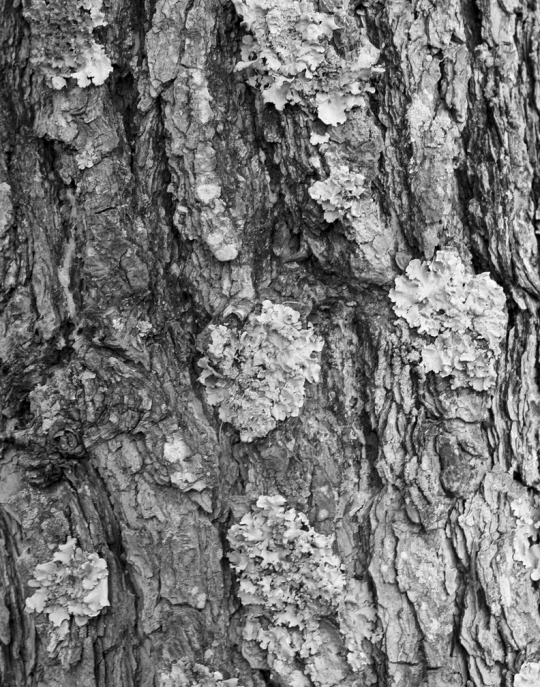
Barks of Black Cherry, Persimmon & Red Pine from my Sunday Cocoon Hunt.
#diospyros virginiana#prunus serotina#pinus resinosa#black cherry#persimmon#red pine#middlesex county#new jersey#lichen#feb#february#2023#monochrome#black and white#bark#textures#trees#nature
3 notes
·
View notes
Video
Amerikaanse Vogelkers / Wild Black Cherry (Prunus serotina) by Janneke Booister Via Flickr: Watercolour on Arches Grain Fin 300 g/m2.
Colours used are Lunar Blue; Daniel Smith Extra Fine Watercolours and Cobalt Blue, New Gamboge, Permanent Alizarine Crimson, Titanium White; all Winsor&Newton Professional.
My own reference.
Paper size 21 x 30 cm (A4), available (Contact me)
Het verhaal van deze aquarel is beschreven in mijn blog / The story of this watercolour is written in my blog jannekesatelier.blogspot.com/
#Aquarel#Janneke Booister#plant#bessen#Prunus serotina#einde van de lente#atmosfeer#Watercolour#berries#end of Spring#atmosphere#flickr
0 notes
Text

Lovely, but troubling. All the flowers that usually begin blooming in early May began blooming in the third week of April, this year. I used to take my mother a bouquet of phlox (the white flowers above) and wild columbine every year for Mother's day, the second Sunday of May.
The flowers are: pink, bleeding heart; white, wild phlox; yellow, tulip; white&yellow, daffodil; blue, both English bluebells and Virginia bluebells. The greenery might be fire cherry, I need to look it up. Prunus pennsylvanica. If it is, I'm excited; the only wild cherry trees I'm used to seeing around here are Prunus serotina, which has tiny black cherries the size of a pea. I'd LOVE to find other types of wild cherries!
14 notes
·
View notes
Text

Black cherry, Prunus Serotina
Native to Eastern US
10 notes
·
View notes
Text




All of the wild black cherry trees I've drawn in the past year (Prunus serotina)
35 notes
·
View notes
Note
My current list of native plants that I should plant, I have no idea if these are already on the land
Which is why I need to survey it
And see if we have any other invasive plants, currently we have: the multi flora rose, the honeysuckle, and the stupid fucking mile-a-minute vine that I’m pulling tomorrow
I can’t remove the giant fields worth of multi flora roses or the giant honeysuckle bushes right now but I can get rid of that stupid fucking vine before it takes over the damn yard
Anyways here’s the list of surprisingly a lot of edible plants and wetland plants that are native and I should plant:
Rubus odoratus — flowering raspberry
Vitis riparia — river grape or Vitis labrusca — fox grape
Rubus recurvicaulis — arching blackberry
Viburnum opulus — highbush-cranberry
Aquilegia canadensis — red columbine
Impatiens capensis — jewelweed, spotted touch-me-not
Lobelia cardinalis — cardinal-flower, red lobelia
Comarum palustre — marsh-cinquefoil, purple marsh-locks
Ranunculus caricetorum — swamp buttercup, swamp crowfoot
Symphyotrichum ciliolatum — Lindley's American-aster
Adiantum pedatum — northern maidenhair fern
Thelypteris palustris — marsh fern
Woodsia glabella — smooth cliff fern
Dryopteris campyloptera — mountain wood fern
Calla palustris — water arum, wild calla
Erythronium americanum — American trout-lily
Lilium philadelphicum — wood lily
Cypripedium acaule — pink lady's-slipper
Juniperus communis — common juniper
Prunus serotina — black cherry
Rhododendron canadense — Canada rosebay, rhodora
Rhododendron groenlandicum — Labrador-tea
Ribes hirtellum — hairy-stemmed gooseberry
Morus rubra — red mulberry
Ribes triste — swamp red currant
Gaylussacia baccata — black huckleberry
Tilia americana — American linden
Vaccinium corymbosum — highbush blueberry
Sambucus nigra — black elderberry
Aralia nudicaulis — wild sarsaparilla
Matteuccia struthiopteris — fiddlehead fern, ostrich fern
Allium tricoccum — ramps, wild leek
Looks like you've got your work laid out for you, huh?
Try not to break your back and don't get burned in the sun.
5 notes
·
View notes
Text
Time for a moth update- sorry for the delay!
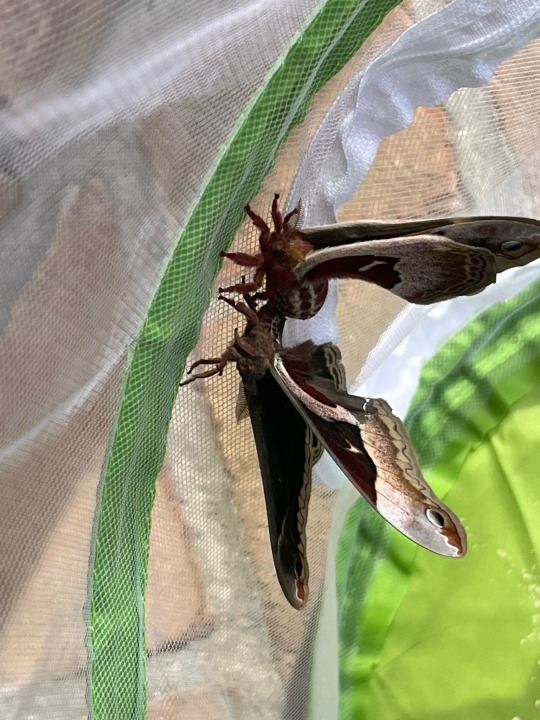
If you remember this cross-species pairing from a while ago? Unfortunately it seems like this did not turn out to be a fertile pairing, since the cecropia is laying eggs rather lethargically. Still, it was a rare event to witness!
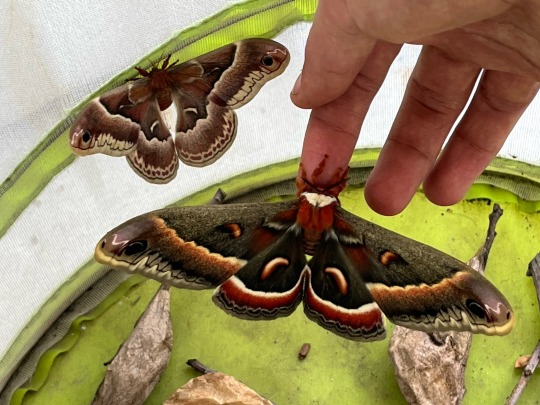
A comparison in size between Hyalophora cecropia and Callosamia promethea. Huge difference.

If that doesn’t give you an idea of the size of cecropia moths this might. They get even bigger than this!

A leftover photo that shows variation in individuals within a species. Notice the varying colors!

Since I can’t monitor the promethea moth eggs while I’m away, I made this setup to help them! This fine mesh cage is tightly zipped around a black cherry (Prunus serotina) branch and will provide plenty fresh food for if the caterpillars if they hatch.
For now that’s all in relation to my saturniid moths; thank you for the patience! I’ll try and share more photos of things outside of them soon!
#insects#bugs#lepidoptera#moths#silk moths#saturniidae#hyalophora#callosamia#cecropia moth#promethea moth
18 notes
·
View notes
Text


Berry season is SO SOON.
Mulberry on the left, black cherry on the right.
#nature#foraging#berries#black cherry#mulberry#fruit trees#edible wild plants#morus nigra#prunus serotina#my photos
10 notes
·
View notes
Text
From a fun day a while back this winter, black cherry 43 dbh Prunus serotina, and the Tulip 58 dbh 125 ft. near by, Liriodendron tulipifera. Spring grove village park. 2 out of four oldgrowth trees not logged from the area we found.










#arborculture#botany#dendrology#liriodendron tulipifera#liriodendron#prunus#ohio#plantblr#prunus serotina#ecology#jaden#jay
9 notes
·
View notes
Text

Black Cherry Tree with Flowers budding - May 6th 2023
5 notes
·
View notes
Text




Black Cherry, Prunus serotina
4 notes
·
View notes
Text
The continuation of my pokemon contest/showcase oc

this is just the basic description of my oc
I hope it is not too bad, haha. ヽ(*^^*)ノ

Her name is Azalea Serotina
Her last name comes from the scientific name of black cherry trees (Prunus serotina) and her first name is the flower azalea.
She is 15 years old, and her family consists of her mother and father.she is the only child of the family.
She lives in Lilycove city in Hoenn. her father works at the cove lily motel,and mother, who works in lilycove department Store.
Personality: she is a bubbly hardworking girl, but sometimes she is forgetful and very gullible.
Hobbys:making pokeblocks, pokepuffs, and poffins (just cooking in general), dressmaking, handicrafts.
The reason she became a coordinator/performer is that when she was little, she didn't really have much interest in pokemon battles. so she thought of working in lilycove department store like her mother when she grew up. but one fateful day,her parents take her to a pokemon contest, and becoming a coordinator becomes her dream because of the flashy pokemon moves and super cool skills that pokemon can do. so she starts her journey in lilycove city.

#oc#original character#pokemon coordinator oc#pokemon performer oc#pokemon oc#pokemon contest#pokemon showcase#pokemon performer#pokemon coordinator#pkmn oc#pokemon original character
4 notes
·
View notes
Text
Super Blue Moon prompt: Black Cherry

Is Stiles a carpenter selling custom furniture made from the beautiful sun-darkened wood of Prunus Serotina? Or does steelworker Derek take up whittling figurines from fallen branches while waiting for his lover to return from the war?
Does hiker Stiles gain the trust of a feral Derek by offering to share his haul of foraged wild cherries? Or does server Derek entice a mischievous magic-user with delicious cocktails and desserts at a supernatural mixer?
Do they meet as kids when they both need to get away from troubles at home and end up climbing the same tree? Or are they high school classmates from different circles who are paired up to do a report on the Luelling/Lewelling family and go on a quest to find the storied Black Republican cherry?
Is Black Cherry the name of Stiles' favorite band? Or is it the color of the fingernail polish Derek likes to wear despite the derogatory comments?
May your imagination be fruitful!
Accepting new and unpublished fic, art, and playlists for the Super Blue Moon event August 25th - August 31st. See here for more info.
2 notes
·
View notes